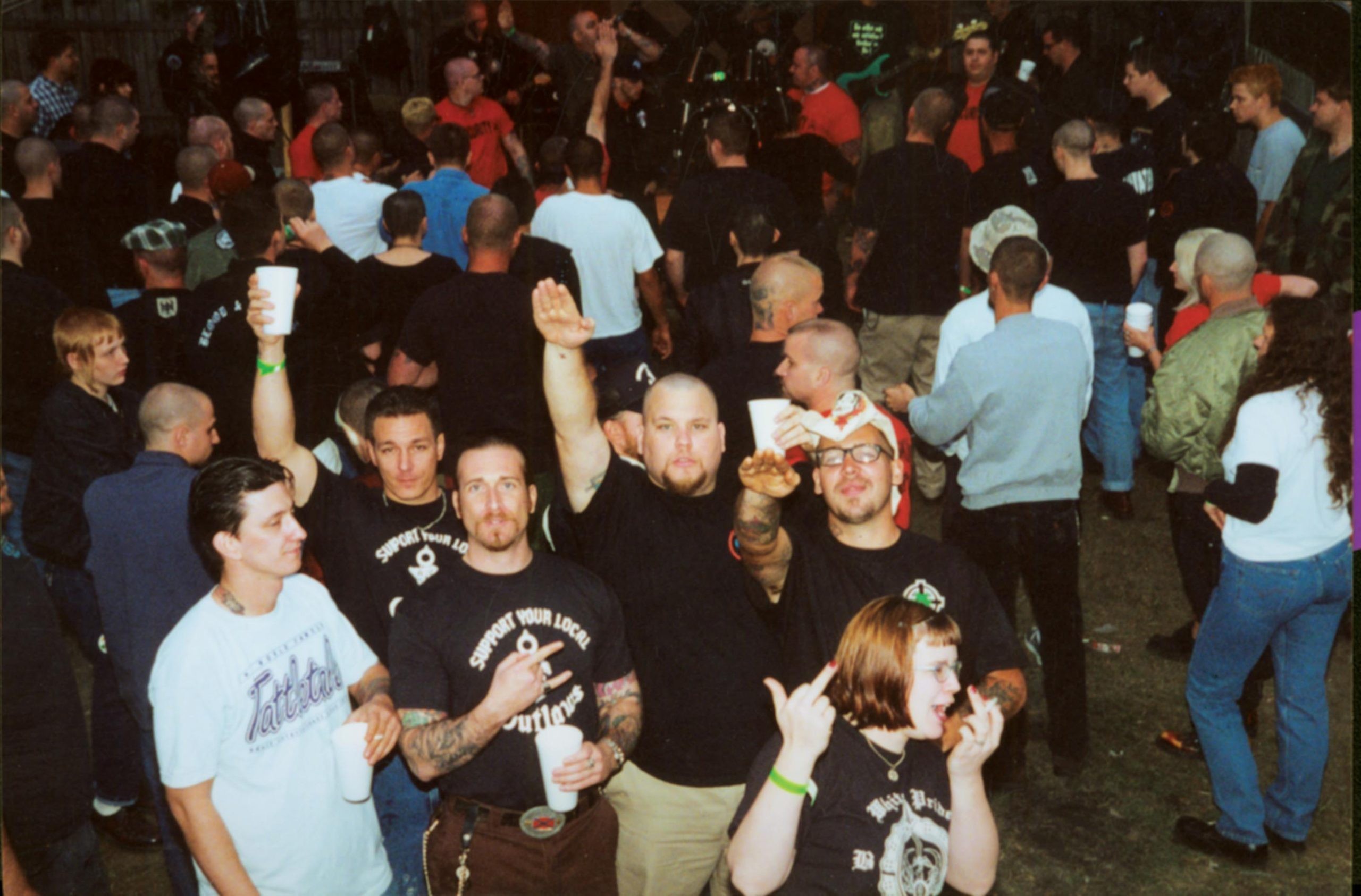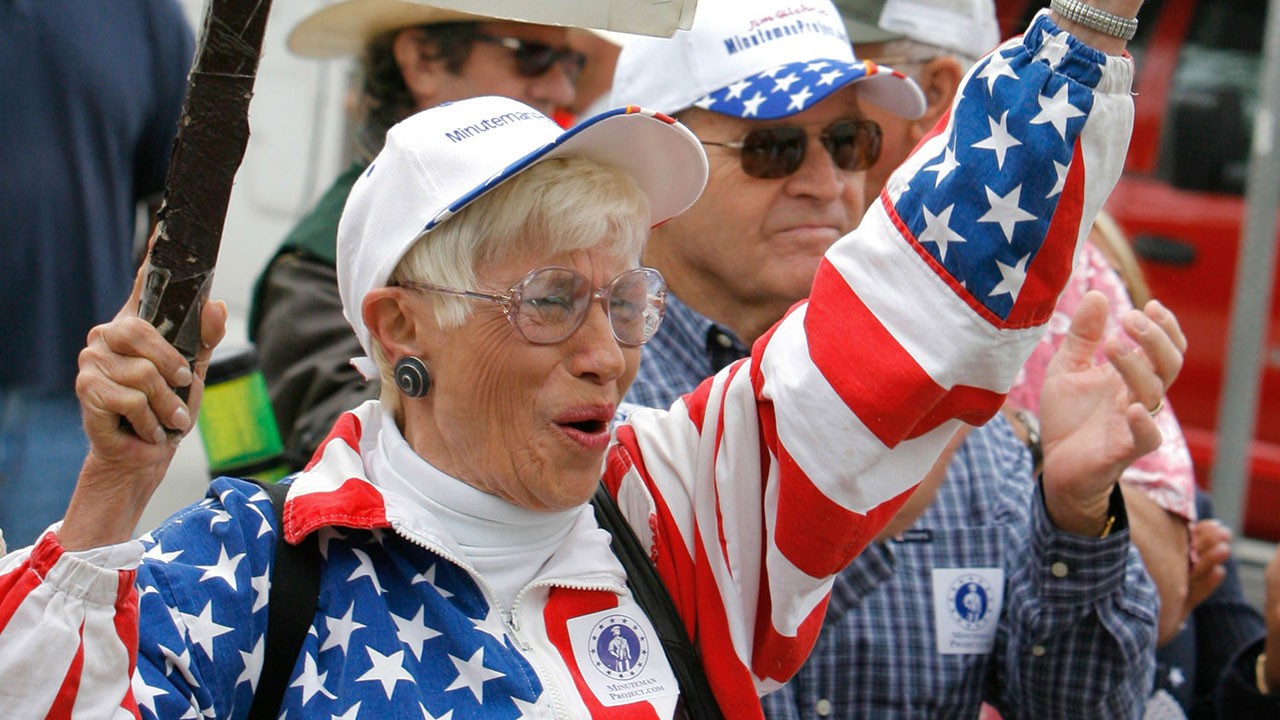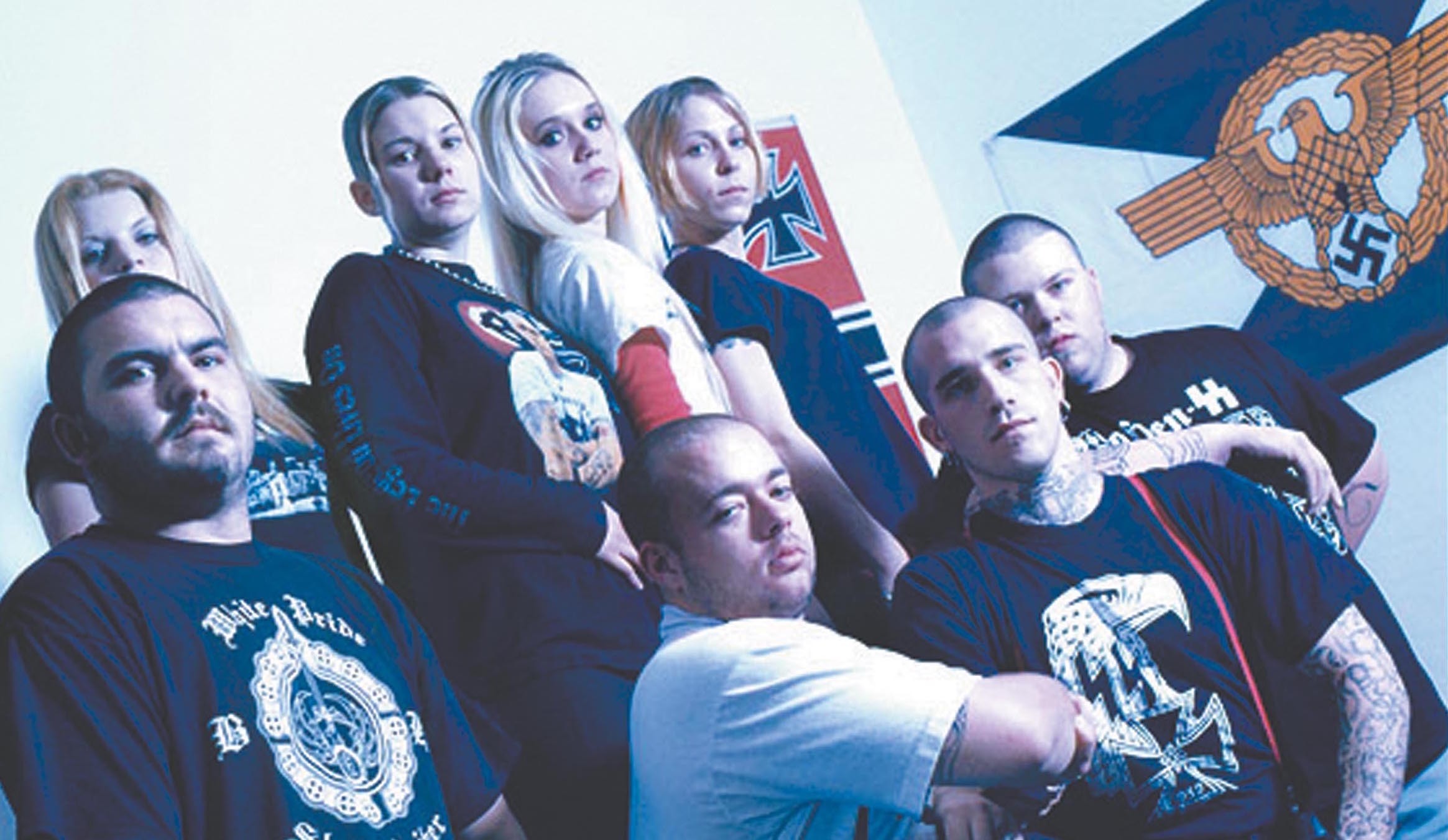What Is A Skinhead? At WHAT.EDU.VN, we provide a clear explanation of the skinhead subculture and its evolution, and its varying ideologies. Are you curious about the historical roots, cultural elements, and the unfortunate association with extremist views? Find answers here and consider posting your own questions on WHAT.EDU.VN for free expert insights and definitions, providing a comprehensive understanding of the skinhead phenomenon. Delve into skinhead origins, skinhead ideology, and the skinhead subculture.
Table of Contents
- What is a Skinhead and Where Did They Originate?
- What are the Defining Characteristics of Skinhead Culture?
- What is the Historical Background of the Skinhead Movement?
- What are the Key Elements of the Original Skinhead Style?
- What Caused the Split Between Racist and Non-Racist Skinheads?
- What Role Did Music Play in the Skinhead Subculture?
- What is the Significance of the “Rock Against Communism” (RAC) Concerts?
- What is the International Reach of the Skinhead Movement?
- What Distinguishes Skinhead Groups in the U.S. from Those in Europe?
- What are Some Common Symbols and Codes Used by Racist Skinheads?
- FAQ About Skinheads
1. What is a Skinhead and Where Did They Originate?
A skinhead is a member of a subculture that originated in the working-class areas of London, England, in the late 1960s. Initially, the skinhead subculture was characterized by its unique style, music preferences, and a sense of working-class pride. However, over time, some factions of the skinhead movement became associated with racism and neo-Nazism, while others maintained their original non-racist or anti-racist stance. The emergence of skinheads reflected a distinct youth culture, setting themselves apart from middle-class “longhairs” and embracing a tough, working-class identity.
To fully understand skinheads, it’s essential to explore their origins, the evolution of their ideology, and their global impact. If you have more questions or need further clarification, WHAT.EDU.VN is here to help. Ask your questions and get free answers from knowledgeable experts. Our platform ensures you receive accurate and comprehensive information. If you need an explanation, a definition, or clarification of an issue, feel free to ask questions at WHAT.EDU.VN.
2. What are the Defining Characteristics of Skinhead Culture?
The defining characteristics of skinhead culture include a shaved head or closely cropped hair, working-class fashion, and a strong sense of community. Originally, skinheads were known for their clean-cut appearance, which distinguished them from the more bohemian styles of the time. Key elements of their attire include:
- Shaved or closely cropped hair: A trademark look that signifies solidarity and rebellion.
- Combat boots: Often Dr. Martens, worn with specific lacing patterns.
- Braces (suspenders): A practical and stylish addition to their wardrobe.
- Bomber jackets: A tough and practical outer layer.
- Fred Perry polo shirts: A staple garment reflecting a sense of mod fashion.
Music also plays a crucial role in skinhead culture, with early skinheads favoring reggae and ska. Over time, this evolved into a distinct genre known as Oi!, which became synonymous with skinhead music. Understanding these elements is essential for anyone researching skinhead subculture.
For more details or to clarify specific aspects of skinhead culture, WHAT.EDU.VN offers a platform to ask your questions and receive free, expert answers. Our goal is to provide a comprehensive understanding of this complex subculture. Do not hesitate to clarify any issues and consult WHAT.EDU.VN.
3. What is the Historical Background of the Skinhead Movement?
The skinhead movement emerged in the late 1960s in Britain as a working-class youth culture. It was influenced by both the mod subculture and Jamaican rude boys. These early skinheads distinguished themselves through their fashion, music, and a sense of camaraderie rooted in their working-class backgrounds. However, as the movement evolved, it became fragmented.
The historical development of the skinhead movement can be summarized as follows:
- Late 1960s: Emergence of original skinhead culture in Britain.
- Early 1970s: Split between racist and non-racist factions.
- Late 1970s: Revival of the movement with neo-fascist influences.
- 1980s: Spread of racist skinhead culture to the United States.
- 1990s-2000s: Proliferation of skinhead groups globally, with varying ideologies.
Understanding this historical timeline is crucial for grasping the complexities within the skinhead movement. At WHAT.EDU.VN, we offer a space to explore these historical nuances further. If you have specific questions about the movement’s development, ask them on our platform and receive detailed, free answers.
4. What are the Key Elements of the Original Skinhead Style?
The original skinhead style was a deliberate statement that rejected the more flamboyant and middle-class aesthetics of other youth subcultures. Key elements of this style included:
- Short hair: Often shaved or closely cropped, distinguishing them from the long-haired hippies and punks.
- Clean and neat appearance: Inspired by Jamaican rude boy fashion, emphasizing a sharp look.
- Working-class attire: Including durable clothing like jeans, work boots, and braces, reflecting their economic background.
- Dr. Martens boots: A practical and iconic footwear choice, often laced in a specific manner.
- Fred Perry shirts: A touch of mod influence, adding a subtle element of style.
The original skinhead style was a symbol of working-class pride and unity. To learn more about the fashion and cultural elements of this era, ask your questions on WHAT.EDU.VN. We provide free access to expert knowledge to help you understand the intricacies of skinhead culture.
5. What Caused the Split Between Racist and Non-Racist Skinheads?
The split between racist and non-racist skinheads occurred primarily due to the rise of far-right political ideologies and increasing racial tensions in Britain during the 1970s. Several factors contributed to this division:
- Influence of neo-fascist groups: Organizations like the National Front and the British Movement promoted racist ideologies within the skinhead subculture.
- Economic hardships: Economic struggles and unemployment led some skinheads to blame immigrants for their problems.
- Rise of “Paki bashing”: Violent attacks on South Asian immigrants became a disturbing trend, driven by racial hatred.
- Music scene: The emergence of “Rock Against Communism” (RAC) music further solidified the racist faction’s identity and ideology.
This ideological schism fundamentally altered the skinhead movement. If you have questions about the causes and consequences of this split, WHAT.EDU.VN is available to provide free, reliable answers. Our platform helps you explore the complex dynamics within the skinhead subculture.
6. What Role Did Music Play in the Skinhead Subculture?
Music has always been integral to the skinhead subculture, serving as a unifying force and a means of expressing identity. Initially, skinheads embraced reggae and ska, genres with roots in Jamaican culture. These musical styles reflected the early skinheads’ admiration for and connection with West Indian immigrants in Britain.
As the movement evolved, so did its music preferences. The emergence of Oi! music provided a distinct sound that resonated with skinheads, addressing working-class themes and street-level experiences. However, the rise of racist skinhead factions led to the development of “Rock Against Communism” (RAC), which promoted white nationalist and anti-immigrant sentiments.
Music’s role in the skinhead subculture can be summarized as follows:
- Early skinheads: Reggae and ska fostered a sense of multicultural unity.
- Evolution: Oi! music provided a distinct working-class voice.
- Racist factions: RAC music promoted hate and division.
To understand how music shaped the skinhead identity and its various factions, WHAT.EDU.VN offers a platform to ask your questions and receive free, expert answers. Our goal is to provide a comprehensive understanding of this complex subculture.
7. What is the Significance of the “Rock Against Communism” (RAC) Concerts?
The “Rock Against Communism” (RAC) concerts were a pivotal development in the racist skinhead subculture. Originating in Britain in the late 1970s, these concerts served as a counterpoint to the “Rock Against Racism” movement. RAC concerts promoted white nationalist ideologies and provided a platform for bands that espoused anti-immigrant, anti-black, and anti-Semitic views.
Key aspects of RAC concerts include:
- Ideological platform: Promoting white nationalism and racial hatred.
- Cultural gathering: Providing a space for racist skinheads to connect and reinforce their beliefs.
- Recruitment tool: Attracting new members to the racist skinhead movement.
- Fundraising: Generating revenue to support racist organizations and activities.
RAC concerts played a significant role in solidifying the racist skinhead identity and fostering a sense of community among like-minded individuals. If you have further questions about the impact and legacy of RAC concerts, WHAT.EDU.VN is here to provide free, detailed answers.
8. What is the International Reach of the Skinhead Movement?
The skinhead movement has extended far beyond its origins in Britain, becoming a global phenomenon with a presence in numerous countries. While the specific characteristics and ideologies of skinhead groups vary by region, the movement shares common themes of working-class identity, rebellion, and, in some cases, extremist views.
Countries with significant skinhead activity include:
- United States: Various skinhead gangs and organizations with a history of violence and hate crimes.
- Russia: A large neo-Nazi skinhead population known for attacks on immigrants and minorities.
- Western Europe: Skinhead groups often linked to radical political parties exploiting fears over immigration.
- Australia: A history of skinhead gangs involved in violent activities and hate crimes.
The internet has facilitated communication and organization among skinhead groups worldwide, transforming the movement from local phenomenon to a global network. To explore the international dimensions of the skinhead movement further, ask your questions on WHAT.EDU.VN. We offer free access to expert knowledge to help you understand the complexities of skinhead culture across the globe.
9. What Distinguishes Skinhead Groups in the U.S. from Those in Europe?
Skinhead groups in the U.S. and Europe share some common characteristics but also have notable differences. These differences often stem from varying political landscapes, social contexts, and historical influences. Key distinctions include:
- Political connections: In Europe, skinhead groups often have ties to radical political parties participating in electoral politics. In the U.S., such direct connections are less common.
- Ideological focus: While both U.S. and European skinheads can hold racist views, the specific targets and expressions of hate may differ based on local demographics and historical grievances.
- Organizational structure: Skinhead groups in the U.S. tend to be more fragmented and less centralized compared to some European counterparts.
- Legal landscape: Laws regarding hate speech and extremist activities vary between the U.S. and European countries, impacting the ways in which skinhead groups operate.
Understanding these distinctions is crucial for analyzing the skinhead movement in different regions. At WHAT.EDU.VN, we provide a platform to ask your questions and receive free, expert answers on the nuances of skinhead culture in the U.S. and Europe.
10. What are Some Common Symbols and Codes Used by Racist Skinheads?
Racist skinheads often use specific symbols and codes to identify themselves and communicate their beliefs. These symbols can appear on clothing, tattoos, and online platforms. Some common examples include:
- 14/88: A numerical code combining the “14 words” slogan of white supremacy with “88” for “Heil Hitler.”
- 28: Shorthand for “Blood and Honour,” a prominent skinhead group.
- 38: Used by the Confederate Hammerskins, the southern faction of Hammerskin Nation.
- Spider web tattoo: Often worn on the elbow, indicating the wearer has committed murder for the skinhead movement.
- White laces: Worn in boots to signify a “white power” ideology.
Being aware of these symbols and codes is essential for understanding the visual language of racist skinheads. To learn more about the symbols and codes used by racist skinheads, ask your questions on WHAT.EDU.VN. We offer free access to expert knowledge to help you understand the complexities of skinhead culture and the meaning of hate symbols.
11. FAQ About Skinheads
| Question | Answer |
|---|---|
| What are the origins of the skinhead subculture? | The skinhead subculture originated in the late 1960s among working-class youths in London, England. |
| What is the typical attire of a skinhead? | Typical attire includes shaved or closely cropped hair, combat boots (often Dr. Martens), braces (suspenders), bomber jackets, and Fred Perry polo shirts. |
| What types of music are associated with skinheads? | Early skinheads favored reggae and ska. Later, Oi! music became popular, and racist skinheads developed “Rock Against Communism” (RAC). |
| What caused the split between racist and non-racist skinheads? | The split occurred due to the rise of far-right political ideologies, economic hardships, and increasing racial tensions in Britain during the 1970s. |
| What is “Rock Against Communism” (RAC)? | “Rock Against Communism” (RAC) is a genre of music that promotes white nationalist ideologies and is associated with racist skinheads. |
| Are all skinheads racist? | No, not all skinheads are racist. The original skinhead subculture was not inherently racist, and there are still non-racist and anti-racist skinheads today. |
| What is the significance of bootlace colors in skinhead culture? | Bootlace colors can indicate different affiliations. Red laces often signify that the wearer has shed blood for the skinhead movement, while white laces may indicate a “white power” ideology. |
| What is the meaning of “14/88” among racist skinheads? | “14/88” is a numerical code combining the “14 words” slogan of white supremacy with “88” for “Heil Hitler.” |
| What is the role of the internet in the skinhead movement? | The internet has facilitated communication and organization among skinhead groups worldwide, transforming the movement from a local phenomenon to a global network. |
| What are some common symbols used by racist skinheads? | Common symbols include “14/88,” spider web tattoos, and certain variations of the swastika. |
| How do skinhead groups in the U.S. differ from those in Europe? | Skinhead groups in the U.S. tend to be more fragmented and less directly connected to political parties compared to some European counterparts. |
| What can be done to combat the spread of racist skinhead ideology? | Education, community engagement, and law enforcement efforts are essential in combating the spread of racist skinhead ideology. |
| What should I do if I encounter a skinhead spreading hate speech? | Report the incident to local authorities and anti-hate organizations. Documenting the incident can also be helpful. |
| Are there resources available for individuals looking to leave hate groups like skinhead gangs? | Yes, organizations like the Southern Poverty Law Center (SPLC) and former hate group members offer resources and support for individuals looking to leave hate groups and rehabilitate. |








Navigating the complexities surrounding skinheads requires access to reliable information. This guide aims to provide comprehensive answers to your questions, ensuring you are well-informed about skinhead history, culture, and the dangers of extremist ideologies.
If you have more questions or need further clarification, WHAT.EDU.VN is here to help. Visit our website at what.edu.vn or contact us at 888 Question City Plaza, Seattle, WA 98101, United States, or via WhatsApp at +1 (206) 555-7890. Our platform ensures you receive accurate and comprehensive answers to all your questions.